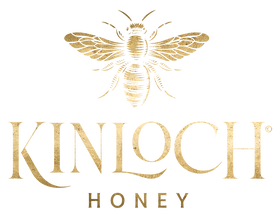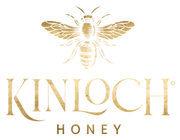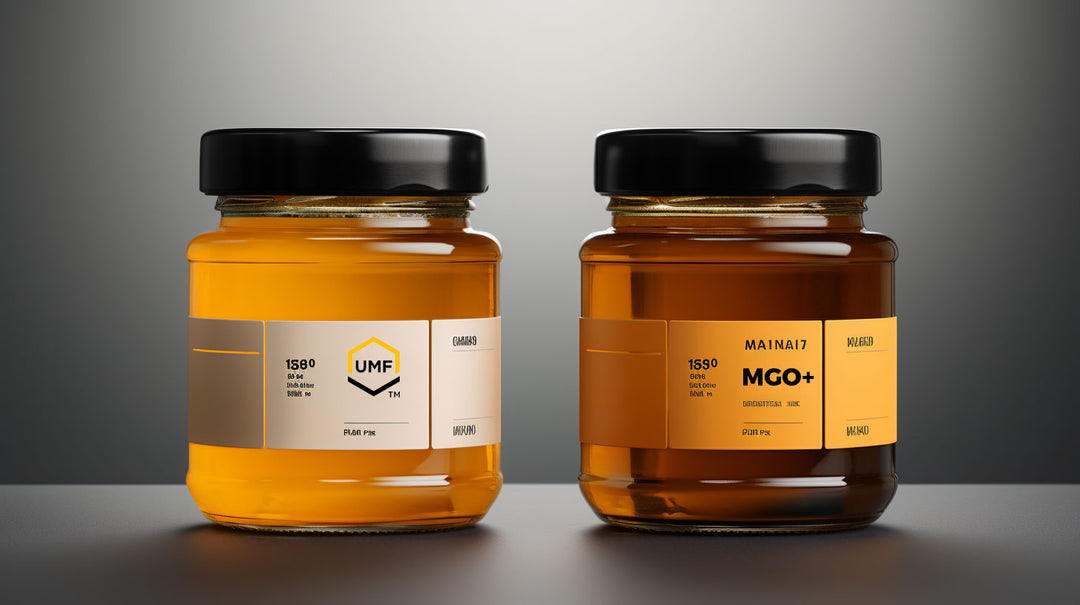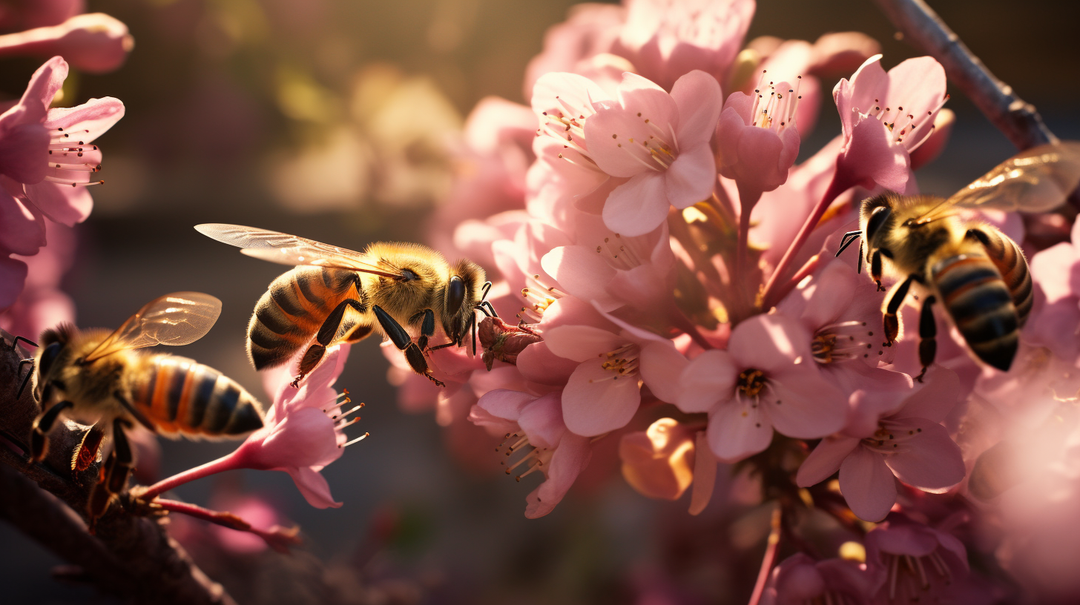Understanding Multifloral and Monofloral Manukā Honey: A Guide to New Zealand's Liquid Gold

Let's delve into the fascinating world of Manukā honey, with a specific focus on monofloral and multifloral Manukā honey. We often get asked what the difference is between these two so I wanted to help our audience understand the distinction.
I've unpacked the nuanced differences between these honey varieties, the unique Manukā rating systems (MGO and UMF), and why the country of origin matters. We'll also explore how you can be sure you're getting genuine New Zealand Manukā honey.

Topics
- What is Manukā Honey?
- Monofloral vs. Multifloral Manukā Honey: What's the Difference?
- Why is New Zealand Manukā Honey Special?
- What are the Health Benefits of Monofloral and Multifloral Manukā Honey?
- How is Manukā Honey Authenticated in the Laboratory?
- How to Recognise Genuine New Zealand Manukā Honey?
- What Does the Flavour of Monofloral and Multifloral Manukā Honey Tell You?
- What Does a Spoonful of Manukā Honey Contain?
- The Importance of Monofloral and Multifloral Manukā Honey Certification
1. What is Manukā Honey?
Manukā honey is a unique type of honey produced by bees that collect nectar from the Manukā bush, native to New Zealand. It's renowned globally for its distinctive flavour and health benefits, including potent antibacterial properties, attributable mainly to its high Methylglyoxal (MGO) levels.
2. Monofloral vs. Multifloral Manukā Honey: What's the Difference?
The difference between monofloral and multifloral Manukā honey lies in the bees' nectar source. Monofloral Manukā honey is made when bees collect nectar predominantly from Manukā flowers. On the other hand, Multifloral Manukā honey results from bees gathering nectar from various plant species, including the Manukā bush.
Monofloral Manukā honey tends to have a stronger flavour and higher potency, reflected in its MGO and UMF™ ratings. These markers signify the honey's antibacterial strength.
3. Why is New Zealand Manukā Honey Special?
New Zealand Manukā honey is unique due to its genuine link to the country's native Manukā bush. To be labelled as New Zealand Manukā honey, the product must meet the New Zealand government's definition of Manukā honey. The Ministry for Primary Industries (MPI) requires the presence of specific chemical markers, including at least 1 DNA marker from Manukā pollen, for certification.
4. What are the Health Benefits of Monofloral and Multifloral Manukā Honey?
Both monofloral and multifloral Manukā honey are rich in health benefits. Thanks to their antibacterial properties, they aid in wound healing, digestive health, and immunity boosting. Manukā honey is also a natural sweetener that can be a healthier alternative to refined sugar.
5. How is Manukā Honey Authenticated in the Laboratory?
Manukā honey is independently tested in a laboratory to confirm its authenticity and potency. The honey is examined for chemical markers, including MGO and DHA (dihydroxyacetone), and a DNA marker from Manukā pollen. It's also checked for HMF (hydroxymethylfurfural), a heat-induced chemical that should stay within acceptable limits for a long shelf life.
6. How to Recognise Genuine New Zealand Manukā Honey?
Identifying genuine New Zealand Manukā honey involves checking for the UMF™ or MGO rating on the label, which should align with MPI's specification. Look for independently certified brands, like Kinloch Honey, that meet these stringent standards.
7. What Does the Flavour of Monofloral and Multifloral Manukā Honey Tell You?
The flavour of Manukā honey can indicate its floral source. Monofloral Manukā honey has a more robust, earthy flavour, reflecting the strong presence of Manukā nectar. Multifloral Manukā honey offers a more complex flavour profile due to the mix of nectars.
8. What Does a Spoonful of Manukā Honey Contain?
A spoonful of Manukā honey contains a blend of sugars, water, and minor components like vitamins, minerals, and enzymes. Monofloral Manukā honey features a higher concentration of MGO, offering greater antibacterial potency.
9. The Importance of Monofloral and Multifloral Manukā Honey Certification
Certification guarantees that the Manukā honey you’re getting is authentic, pure, and meets the New Zealand government's definition of Manukā honey. Always look for products with an official UMF™ or MGO rating, independently tested to show they meet these standards.
Here are some key takeaways:
- Manukā honey is unique to New Zealand, made by bees that collect nectar from the native Manukā bush.
- Monofloral Manukā honey is produced when bees primarily gather nectar from Manukā flowers, while multifloral Manukā honey results from nectar from various plant types.
- Genuine New Zealand Manukā honey is authenticated through rigorous testing, ensuring it meets the New Zealand government's standards.
- Both monofloral and multifloral Manukā honey offer health benefits, such as antibacterial properties and digestive health support.
- The UMF™ or MGO ratings are crucial in determining the antibacterial potency of Manukā honey.
- Always choose certified Manukā honey from trusted brands like Kinloch Honey for guaranteed authenticity and quality.




